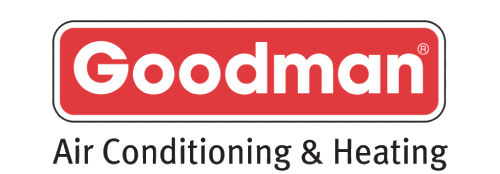How long does it take to cool your house after an AC repair? The straightforward answer is that it depends. Typically, you can expect a moderate-sized home to start feeling cooler within a few hours after a repair. However, the exact timing varies based on several critical factors, from the type of your air conditioning system and the specifics of the repair to the size of your home and the current weather conditions.
What You Will Find Out
- System Type and Repair Scope: The efficiency of newer AC models versus older units and how extensive repairs impact cooling times.
- Home Size and Insulation Quality: Insights into how the square footage of your home and its insulation affect the cooling process.
- Optimal Maintenance for Faster Cooling: Tips on air filter replacement and other maintenance practices that can expedite cooling.
- External Temperature Influence: An exploration of how the weather outside affects how quickly your home cools down.
In this comprehensive guide, we’ll dive deep into these factors, providing you with a nuanced understanding of what to expect after your AC has been repaired. You’ll learn not just about the immediate effects of AC repair on your home’s temperature, but also how to optimize your system for the quickest cooling, ensuring comfort even on the hottest days.
Factors Affecting Cooling Time After AC Repair
- Type of air conditioning system: Central air conditioning systems typically take longer to cool a house compared to ductless mini-split systems.
- The extent of the repair needed: A minor repair might not significantly impact cooling times, while a major repair could require more time for the system to regain optimal efficiency.
- Size and layout of your home: Larger homes take longer to cool down compared to smaller homes. The layout of your home can also play a role.
- External temperature and weather conditions: The hotter it is outside, the harder your AC system needs to work to cool your home. High humidity levels can also make it more challenging for your AC to remove moisture from the air.
How Long Does It Take to Cool a House After AC Repair?
While it’s difficult to provide a one-size-fits-all answer, here’s a general idea of cooling times based on different scenarios:
- For a moderate-sized home (around 1,500 sq ft) with a minor repair on a mild day (around 75 degrees Fahrenheit), you might expect your home to cool down within 3 hours.
- However, it’s important to remember that this is just an estimate. Several factors can influence how long it actually takes.
For a more accurate estimate, consulting with a qualified HVAC professional is highly recommended.
Tips to Improve Cooling Efficiency Post-Repair
- Proper Insulation: Ensure your home has adequate insulation to prevent heat transfer from outside, reducing the workload on your AC.
- Curtains and Blinds: Use curtains or blinds to block sunlight from penetrating through windows during the hottest part of the day.
- Pro Tip: Consider using blackout curtains or blinds specifically designed to block heat.
- Air Filter Replacement: Regularly changing air filters (at least once a month) ensures optimal airflow and allows your AC to cool your home more efficiently.
Optimizing Your AC Unit for Peak Performance
- Regular Air Filter Replacement: Regularly changing air filters ensures optimal airflow and allows your AC to cool your home more efficiently.
- Ensuring Proper Thermostat Settings: Setting the thermostat to a comfortable temperature is essential. Constantly adjusting the thermostat can confuse the system and make it work harder.
- Scheduling Regular Maintenance: Regular HVAC maintenance by a qualified professional is vital for peak AC performance.
- Right-Sizing Your AC Unit: A properly sized AC unit will cool your home efficiently without running continuously.
Understanding Air Conditioning Systems
Your air conditioner (AC) is a vital part of your HVAC (heating, ventilation, and air conditioning) system, keeping your home cool and comfortable during hot weather. This section will break down the essential components of a central AC system, explain how it cools your home, and explore some common issues that might require repairs.
Basic Components of a Central Air Conditioning System
- Condenser (outdoor unit): This metal cabinet houses the compressor and a coil with refrigerant lines. The condenser releases heat extracted from your home to the outside air.
- Evaporator coil (indoor unit): Located inside your home, typically near the furnace, this unit contains another coil with refrigerant lines. The evaporator coil absorbs heat from the indoor air, making it feel cooler.
- Compressor: This electric pump pressurizes the refrigerant, allowing it to absorb heat effectively indoors and release it outdoors.
- Refrigerant lines: These insulated tubes carry refrigerant throughout the system, circulating it between the condenser and evaporator coil.
- Thermostat: This control panel acts as the brain of your AC system. You set your desired temperature on the thermostat, and it signals the AC to turn on and off accordingly.
- Ductwork: A network of air ducts distributes cool air from the evaporator coil throughout your home.
How AC Systems Cool Your Home
Central air conditioners use a process called the refrigeration cycle to cool your home. Here’s a simplified explanation:
- Heat Absorption: Refrigerant, a special chemical that circulates within the closed-loop system, absorbs heat from the warm indoor air as it passes through the evaporator coil. This makes the air surrounding the coil feel cooler.
- Compression: The compressor pressurizes the refrigerant, increasing its temperature.
- Heat Release: The hot, high-pressure refrigerant travels through the refrigerant lines to the condenser unit outside. There, the condenser coil releases the heat extracted from your home into the outdoor air. A fan helps dissipate this heat.
- Cycle Repeats: The cooled refrigerant then flows back to the evaporator coil, ready to absorb more heat and repeat the cycle. The thermostat controls this cycle, turning the AC on and off to maintain your desired indoor temperature.
Common Issues That Require AC Repair
Several issues can hinder your AC’s performance and necessitate repairs. Here are some common problems:
- Refrigerant leak: A leak in the refrigerant lines can significantly reduce your AC’s cooling capacity.
- Clogged condensate line: The condensate line drains condensation (moisture) from the system. A clog can lead to water leaks and affect cooling efficiency.
- Faulty thermostat: A malfunctioning thermostat might prevent your AC from turning on or off at the right times, impacting temperature control.
- Failing compressor: The compressor is a crucial component, and its failure can render your AC inoperable.
It’s important to note that this list is not exhaustive. If you notice signs like reduced cooling performance, unusual noises, or strange odors coming from your AC, it’s best to consult with a qualified HVAC professional for diagnosis and repair.
When to Consider AC Replacement for Better Cooling
- Age of Your System: If your AC is nearing the end of its expected lifespan and experiencing frequent breakdowns, repairs might become more frequent and expensive.
- Decreased Cooling Performance: A failing compressor, refrigerant leaks, or other internal issues could be signs your AC is struggling to keep your home cool.
- Rising Energy Costs: An inefficient AC system working overtime to cool your home could be the reason for skyrocketing energy bills.
- Environmental Impact: Older AC units might use outdated refrigerants that can be harmful to the environment.
How Long It Will Take to Cool Your House After an AC Repair?
Several factors affect how long it takes your AC to cool your home after a repair, including the size of your home, the extent of the repair, and even the weather outside. For a moderate-sized home (around 1,500 sq ft) with a minor repair on a mild day (around 75 degrees Fahrenheit), you might expect your house to cool down within approximately 3 hours. However, it’s important to remember that this is just an estimate. Many factors, like outside temperature and humidity, can affect how long it actually takes.
For a more accurate estimate and to ensure optimal cooling performance, contacting a qualified HVAC professional is highly recommended. They can assess your specific situation and advise you on the expected timeframe for cooling your home. Regular maintenance by an HVAC professional can also help prevent future problems and keep your AC system running smoothly.
Ready to Get Your Home Cool and Comfortable Again?
Contact Bob’s Repair today to schedule an appointment for AC repair or maintenance! Our experienced technicians can diagnose and fix any AC issue, ensuring your home stays cool and comfortable all summer long.
Call us at (702) 213-5906 or visit our website at https://bobsrepair.com/contact/ to schedule an appointment today!










